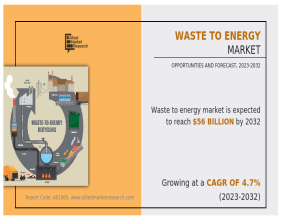Highlights:
- Global equities remain in positive territory, buoyed by declining bond yields and a softer US dollar.
- Mixed earnings reports from key companies such as (NASDAQ:AMD), (NASDAQ:GOOGL), (NASDAQ:UBER), and (NASDAQ:SNAP) highlight varying operational performances.
- The Australian market sees robust contributions from (ASX:NWS), (ASX:REA), and (ASX:BPT), reinforcing confidence amid evolving economic indicators.
Global Market Overview
ASX 200 futures have surged by 59 points (up 0.70%) as of 8:30 am AEDT, setting the tone for an active trading session across global markets. Major US indices have rallied from an initially weak start, with benchmarks finishing at near-record levels. This upward momentum has been supported by a notable decline in US bond yields—specifically, the US 10-year yield fell by 8 basis points, reaching levels not seen since mid-December. Market participants are positioning themselves amid expectations that yield-sensitive sectors, including real estate and utilities, may continue to drive performance in the near term.
Corporate Earnings in Detail
Earnings reports from several high-profile companies have added layers of complexity to the market narrative:
- (NASDAQ:AMD): The semiconductor giant reported a profit beat with nearly doubled data center sales projected for 2024. Despite these encouraging signs, overall results missed key expectations, and the outlook provided a more cautious tone for future performance.
- (NASDAQ:GOOGL): The tech behemoth experienced a slowdown in its cloud revenue growth, with estimates showing an approximate 5 percentage point deceleration year-on-year. Additionally, an acceleration in depreciation expenses is anticipated to impact margins from 2025 onward. However, strong performance in Search and YouTube provided a counterbalance.
- (NASDAQ:UBER): Reporting a Q4 EPS of 23 cents against estimates of 50 cents, the ride-sharing company’s performance fell short of some market expectations, with its guidance reflecting modest adjustments.
- (NASDAQ:SNAP): The social media platform recorded Q4 earnings that surpassed expectations in terms of advertising sales and user base expansion, even as the guidance signaled challenges ahead.
These mixed results underscore the variability within the tech and digital advertising sectors, with each company confronting distinct operational headwinds and growth trajectories.
Broader Economic and Policy Developments
Monetary policy and international trade dynamics continue to cast a long shadow over market sentiment. Comments from a representative at the Federal Reserve indicated that maintaining a cautious stance on interest rates is advisable as long as the underlying economy and labor market maintain their strength. This perspective comes amid ongoing trade frictions—exemplified by the US Postal Service’s reversal of its temporary suspension on parcels from China and Hong Kong—and the recent imposition of export controls by China on key minerals following US tariff actions. Furthermore, discussions within the European Union about potentially targeting major US tech firms in response to tariff threats highlight the multifaceted nature of current trade disputes.
Economic Data and Sector Performance
Recent economic data has painted a nuanced picture of global growth:
- In the United States, the ISM Services PMI has cooled to 52.8, trailing the consensus forecast of 54.0. The decline in the new orders index—now at its lowest level since June 2024—coupled with reports of poor weather impacting production, signal areas of concern.
- The US trade deficit widened in December, driven by record-high import levels in the run-up to a presidential inauguration.
- In China, the Caixin Services PMI experienced a slight dip from 52.2 to 51, with the employment sub-index declining at the fastest pace since April 2024. Despite this, robust consumer spending was observed during the Lunar New Year celebrations.
- The United Kingdom’s service sector has encountered early-year challenges, as firms have been forced to raise prices at the fastest pace observed in a year, contrasting with Japan’s service PMI, which has expanded at the fastest pace in four months.
These indicators illustrate the diverse economic conditions across regions, with each area contending with its own set of challenges and growth opportunities.
Australian Market and Domestic Corporate Performance
On the domestic front, the Australian market has witnessed significant corporate achievements that have further bolstered investor sentiment:
- (ASX:BPT): The energy company reported a 37% growth in net profit after tax (NPAT) for the first half of 2025, reaching $237 million. Higher production levels and LNG swap cargos were pivotal in this performance, accompanied by the announcement of an interim dividend of 3 cents per share and a tightening of guidance.
- (ASX:NWS): The media conglomerate exceeded market expectations by posting Q2 earnings per share (EPS) of 33 cents against a consensus of 31 cents. EBITDA grew by 20% to $478 million, reflecting solid performance in an evolving content landscape that increasingly emphasizes advanced digital applications, including aspects of artificial intelligence.
- (ASX:REA): The real estate firm reported a 26% increase in NPAT, climbing to $314 million in the first half of 2025, marginally outperforming consensus estimates. An interim dividend was raised by 26% to $1.10 per share. The performance was driven by consistent vendor confidence, higher sales volumes, and a market environment supported by strong employment figures, robust immigration levels, and anticipations of potential interest rate cuts in early 2025.
The domestic earnings landscape reveals a resilient performance among Australian companies, despite global uncertainties. The detailed guidance and strong sales figures reflect underlying market demand and operational strength in sectors such as energy, media, and real estate.
Sectoral Developments and Additional Market Observations
Other noteworthy developments include:
- Automotive Sector: Reports indicate that merger discussions between Honda and Nissan have reportedly been halted after Nissan expressed concerns regarding a potential subsidiary relationship. This development is reflective of the broader strategic recalibrations occurring within the automotive industry.
- Technology Restructuring: (NASDAQ:WDAY) announced plans to reduce its workforce by nearly 2,000 employees as part of a strategic pivot aimed at enhancing profitability. This move highlights the challenges even established technology firms face in adapting to shifting market conditions.
Commodity Markets and Investment Vehicles
In the commodities sphere, gold has continued its rally, marking a fifth consecutive session at all-time highs of approximately US$2,882 per ounce. This sustained upward movement contributed to the Gold Miners ETF (GDX) reaching a three-month high, reflecting renewed investor interest in the sector. Conversely, the Australian gold price experienced only a modest increase of 0.2%, reaching US$4,551 per ounce in the face of a declining US dollar. Such disparities underscore the localized pressures that can affect commodity pricing, even amid broader international trends.
Final Analysis
Global markets are navigating a complex and evolving landscape characterized by robust equity performance, divergent corporate earnings, and fluctuating economic indicators. While major US indices and Australian companies continue to exhibit strength, the varied performance among high-profile technology and automotive companies points to a broader narrative of adaptation and recalibration. Central bank policies, trade dynamics, and regional economic data collectively contribute to a multifaceted backdrop against which future market movements will be determined.
Continued attention to corporate earnings, economic data releases, and policy signals will be crucial in understanding how these diverse factors interact in shaping market sentiment. The detailed performance of companies such as (NASDAQ:AMD), (NASDAQ:GOOGL), (NASDAQ:UBER), (NASDAQ:SNAP), (ASX:NWS), (ASX:REA), and (ASX:BPT) provides a window into the operational challenges and strategic opportunities emerging across different sectors. As the global economy adapts to these evolving conditions, the interplay between domestic achievements and international developments remains a central focus for market observers and analysts alike.




